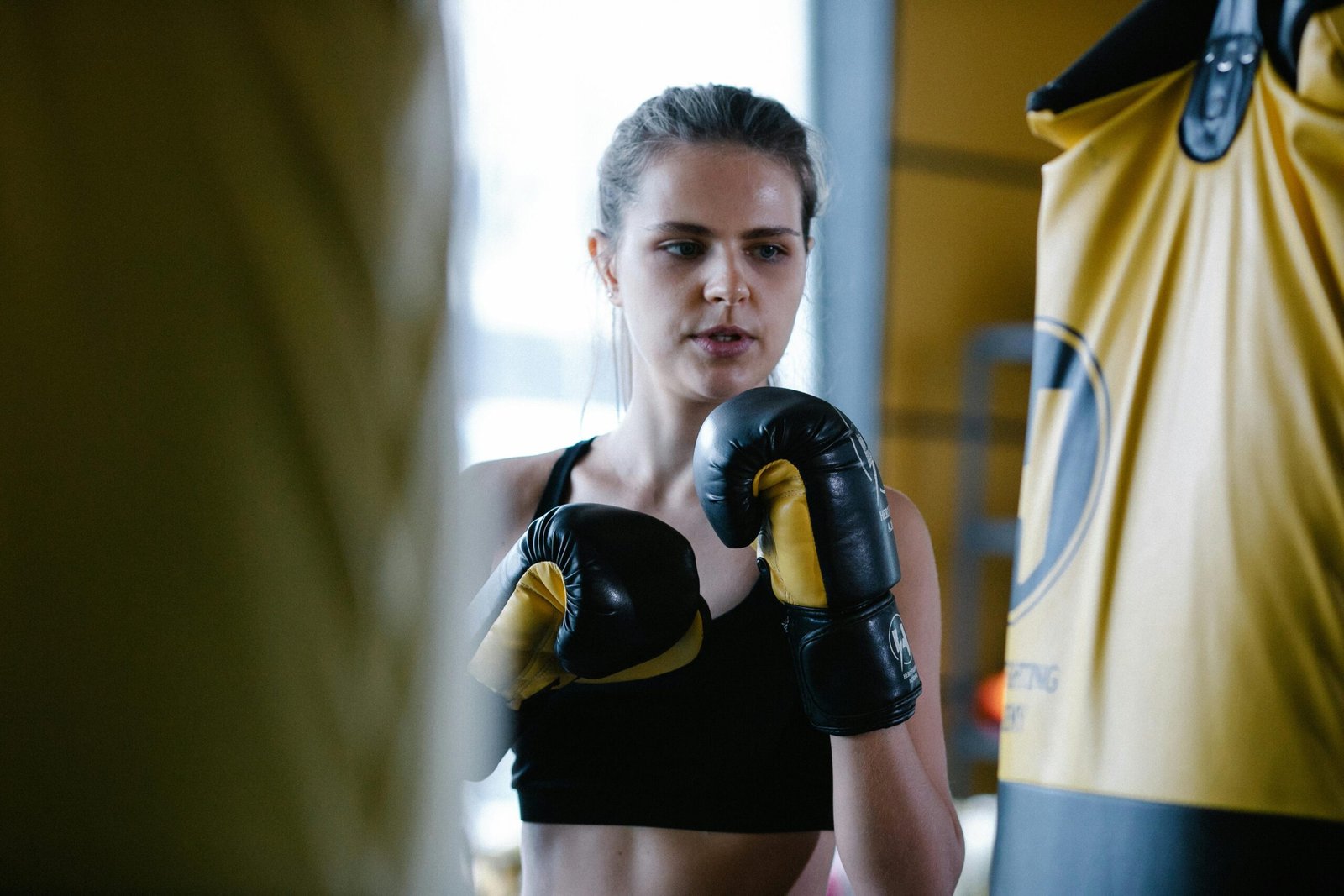Effective Physical Conditioning Techniques
Introduction
Physical conditioning is a fundamental aspect of achieving peak performance and maintaining overall health. It encompasses a variety of exercises and techniques aimed at enhancing strength, endurance, flexibility, and overall fitness. This article delves into the most effective physical conditioning techniques, providing a comprehensive guide for individuals seeking to optimize their physical capabilities.
Cardiovascular Conditioning
Running and Jogging
Running and jogging are quintessential cardiovascular activities that improve heart health, enhance lung capacity, and increase stamina. Engaging in regular running or jogging sessions can significantly boost cardiovascular endurance. For optimal results, incorporate interval training, which involves alternating between high-intensity sprints and moderate-paced jogging. This method not only burns calories efficiently but also improves aerobic and anaerobic endurance.
Cycling
Cycling is an excellent low-impact exercise that enhances cardiovascular fitness while being gentle on the joints. Whether on a stationary bike or cycling outdoors, this activity promotes heart health and strengthens the lower body muscles. Incorporate hill climbs and interval sprints into your cycling routine to challenge your cardiovascular system and build muscular endurance.
Swimming
Swimming provides a full-body workout that effectively conditions the cardiovascular system. The resistance of water makes swimming a high-intensity, low-impact exercise that builds strength, endurance, and flexibility. Incorporate different strokes such as freestyle, backstroke, and butterfly to target various muscle groups and enhance overall conditioning.
Strength Training
Weightlifting
Weightlifting is a cornerstone of strength training, focusing on building muscle mass, strength, and power. Incorporate compound exercises such as squats, deadlifts, and bench presses into your routine to engage multiple muscle groups simultaneously. Progressive overload, which involves gradually increasing the weight lifted, is essential for continuous strength gains and muscle development.
Bodyweight Exercises
Bodyweight exercises are versatile and can be performed anywhere, making them ideal for building strength without equipment. Push-ups, pull-ups, squats, and lunges are effective exercises that target various muscle groups. Incorporate variations such as plyometric push-ups or jump squats to increase intensity and challenge your muscles.
Resistance Band Workouts
Resistance bands provide a portable and adjustable means of resistance training. They are excellent for targeting smaller muscle groups and stabilizing muscles that are often overlooked in traditional weightlifting. Exercises such as banded squats, rows, and chest presses can be seamlessly integrated into any strength training regimen.
Flexibility and Mobility Training
Yoga
Yoga is a holistic practice that enhances flexibility, balance, and mental well-being. Regular practice of yoga poses (asanas) such as downward dog, warrior poses, and seated forward bends improves joint mobility and muscle elasticity. Incorporating yoga into your routine can also reduce stress and improve overall body awareness.
Dynamic Stretching
Dynamic stretching involves moving parts of your body through a full range of motion, which warms up muscles and improves flexibility. This type of stretching is particularly effective as part of a warm-up routine before engaging in more intense physical activities. Examples include leg swings, arm circles, and torso twists.
Foam Rolling
Foam rolling is a form of self-myofascial release that helps alleviate muscle tightness and improve flexibility. By rolling over various muscle groups with a foam roller, you can break up adhesions and increase blood flow to the tissues. Regular foam rolling can aid in muscle recovery and enhance overall mobility.
Endurance Training
Long-Distance Running
Long-distance running builds cardiovascular endurance and mental resilience. Training for events such as marathons requires a structured approach, including long runs, tempo runs, and interval training. Consistency and gradual progression in mileage are key to preventing injuries and achieving endurance goals.
Rowing
Rowing is a full-body workout that enhances both cardiovascular and muscular endurance. Utilizing a rowing machine or rowing on water, this activity engages the legs, core, and upper body. Incorporate interval training and steady-state rowing sessions to build endurance and improve overall fitness.
Circuit Training
Circuit training combines cardiovascular and strength training exercises in a high-intensity format. By moving quickly between exercises such as jumping jacks, burpees, and kettlebell swings, you can maintain an elevated heart rate and build endurance. This efficient workout method maximizes calorie burn and improves overall conditioning.
High-Intensity Interval Training (HIIT)
Benefits of HIIT
HIIT involves short bursts of intense exercise followed by brief periods of rest or low-intensity activity. This training method is highly effective for improving cardiovascular fitness, burning fat, and increasing metabolic rate. HIIT workouts can be tailored to various fitness levels and can include exercises such as sprints, cycling, and bodyweight movements.
Sample HIIT Workout
A typical HIIT workout might include:
- 30 seconds of sprinting, followed by 30 seconds of walking or jogging (repeat for 10 rounds)
- 20 seconds of burpees, followed by 10 seconds of rest (repeat for 8 rounds)
- 1 minute of high knees, followed by 1 minute of rest (repeat for 5 rounds)
Incorporating HIIT into your training regimen can yield significant improvements in both aerobic and anaerobic capacity.
Recovery and Rest
Importance of Recovery
Recovery is a crucial component of any conditioning program, allowing the body to repair and strengthen itself between workouts. Adequate rest prevents overtraining, reduces the risk of injury, and ensures long-term progress. Incorporate rest days into your weekly routine and listen to your body’s signals to avoid burnout.
Active Recovery
Active recovery involves low-intensity activities that promote blood flow and aid in muscle recovery without causing additional strain. Activities such as light walking, yoga, and swimming can enhance recovery by reducing muscle soreness and stiffness. Incorporating active recovery days can help maintain a consistent exercise routine while allowing the body to recuperate.

Nutrition and Hydration
Balanced Diet
A balanced diet rich in essential nutrients supports physical conditioning by providing the energy and building blocks needed for performance and recovery. Include a variety of protein sources, complex carbohydrates, healthy fats, and micronutrients in your diet. Timing meals around workouts can optimize energy levels and recovery.
Hydration
Staying hydrated is vital for maintaining physical performance and overall health. Adequate hydration supports muscle function, joint lubrication, and temperature regulation. Aim to drink water consistently throughout the day and increase intake during and after workouts to replace lost fluids.
Conclusion
Effective physical conditioning techniques encompass a broad spectrum of activities that improve cardiovascular health, build strength, enhance flexibility, and boost endurance. By incorporating a balanced mix of cardiovascular, strength, flexibility, and endurance training, along with proper recovery and nutrition, individuals can achieve optimal physical fitness and overall well-being. Remember, consistency and progression are key to long-term success in any conditioning program.
Mental Conditioning and Mindfulness
Meditation
Meditation is a powerful tool for mental conditioning that enhances focus, reduces stress, and promotes overall mental well-being. Incorporating regular meditation sessions into your routine can improve your ability to concentrate, maintain mental clarity, and manage stress effectively. Practices such as mindfulness meditation, guided visualization, and deep breathing exercises can help calm the mind and improve mental resilience.
Visualization Techniques
Visualization involves mentally rehearsing specific movements or scenarios to enhance performance. Athletes and fitness enthusiasts often use visualization to improve their techniques, boost confidence, and prepare mentally for competitions or challenging workouts. Regularly practicing visualization can create a strong mind-body connection and improve overall performance.
Positive Affirmations
Positive affirmations are statements that reinforce positive beliefs and attitudes. Repeating affirmations such as “I am strong,” “I am capable,” or “I am improving every day” can boost self-esteem and motivation. Integrating affirmations into your daily routine can foster a positive mindset, enhance mental toughness, and support long-term fitness goals.
Tailoring Your Conditioning Program
Individual Goals and Needs
Effective physical conditioning programs should be tailored to individual goals and needs. Whether aiming for weight loss, muscle gain, improved athletic performance, or general health, personalizing your training regimen ensures optimal results. Assess your fitness level, identify specific objectives, and design a program that aligns with your aspirations.
Periodization
Periodization involves dividing your training program into distinct phases, each with specific goals and focuses. This approach prevents plateaus, reduces the risk of overtraining, and promotes continuous improvement. Common phases include:
- Preparation Phase: Focus on building a solid fitness foundation with moderate-intensity exercises.
- Building Phase: Increase intensity and volume to achieve specific fitness goals.
- Peak Phase: Maximize performance with high-intensity, sport-specific training.
- Recovery Phase: Reduce intensity and allow the body to recover and adapt.
Monitoring Progress
Tracking your progress is essential for evaluating the effectiveness of your conditioning program. Use tools such as fitness apps, journals, or wearable technology to monitor key metrics like workout intensity, duration, and frequency. Regularly reviewing your progress helps identify areas for improvement and adjust your program accordingly.
Incorporating Technology in Physical Conditioning
Fitness Apps
Fitness apps offer a convenient way to plan, track, and analyze your workouts. Many apps provide customizable workout plans, guided exercises, and progress tracking features. Popular apps like MyFitnessPal, Strava, and Fitbit can help you stay motivated and achieve your fitness goals.
Wearable Devices
Wearable devices such as fitness trackers and smartwatches provide real-time data on various health and fitness metrics. These devices can monitor heart rate, steps taken, calories burned, and sleep patterns, offering valuable insights into your overall health and conditioning progress. Brands like Garmin, Apple, and Fitbit offer a range of options to suit different needs and preferences.
Online Training Programs
Online training programs and virtual fitness classes provide access to professional guidance and structured workouts from the comfort of your home. Platforms like Peloton, Beachbody On Demand, and Daily Burn offer a variety of programs tailored to different fitness levels and goals. Engaging in online training can help maintain consistency and motivation, especially for those with busy schedules.
Special Considerations
Age-Related Conditioning
Physical conditioning requirements change with age, necessitating adjustments to training programs. Older adults should focus on maintaining strength, flexibility, and cardiovascular health while minimizing the risk of injury. Low-impact exercises, strength training with lighter weights, and balance exercises are particularly beneficial. Regular health check-ups and consultations with fitness professionals can help design safe and effective conditioning programs for older adults.
Conditioning for Athletes
Athletes require sport-specific conditioning to enhance performance and prevent injuries. Incorporating drills and exercises that mimic the movements and demands of their sport is essential. Strength training, agility drills, plyometrics, and flexibility exercises should be tailored to the unique needs of the athlete and their sport. Periodization and recovery strategies play a critical role in optimizing athletic performance.
Conditioning for Beginners
For beginners, starting with a balanced and gradual approach is crucial to prevent injury and build a solid fitness foundation. Begin with low to moderate intensity exercises, focusing on proper form and technique. Gradually increase the intensity and complexity of workouts as fitness levels improve. Seeking guidance from fitness professionals and joining beginner-friendly classes can provide support and motivation.
Community and Support
Finding a Fitness Community
Joining a fitness community can provide social support, motivation, and accountability. Whether it’s a local gym, sports club, or online group, being part of a community can enhance your fitness journey. Participating in group workouts, challenges, and events fosters a sense of camaraderie and helps maintain motivation.

Working with Professionals
Working with fitness professionals such as personal trainers, physiotherapists, and nutritionists can provide personalized guidance and support. These experts can help design tailored conditioning programs, address specific concerns, and ensure safe and effective training. Investing in professional support can significantly enhance your fitness outcomes.
Conclusion
Effective physical conditioning encompasses a wide range of techniques aimed at improving cardiovascular health, building strength, enhancing flexibility, and boosting endurance. By incorporating a balanced mix of exercises, personalized training plans, and recovery strategies, individuals can achieve optimal physical fitness and overall well-being. Consistency, progression, and a positive mindset are key to long-term success. Embrace the journey, stay committed, and enjoy the transformative benefits of physical conditioning.















